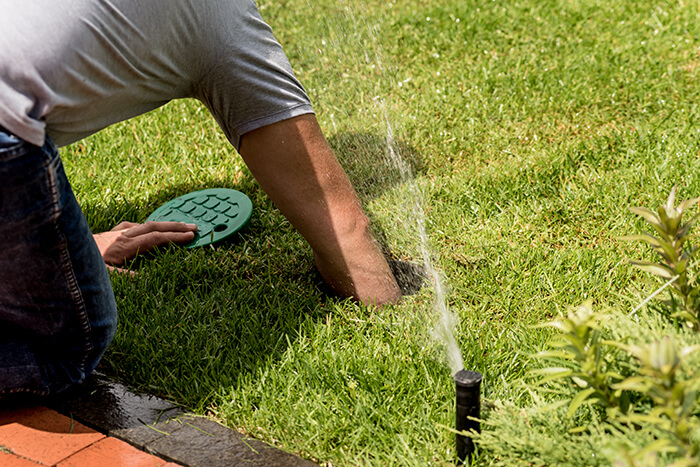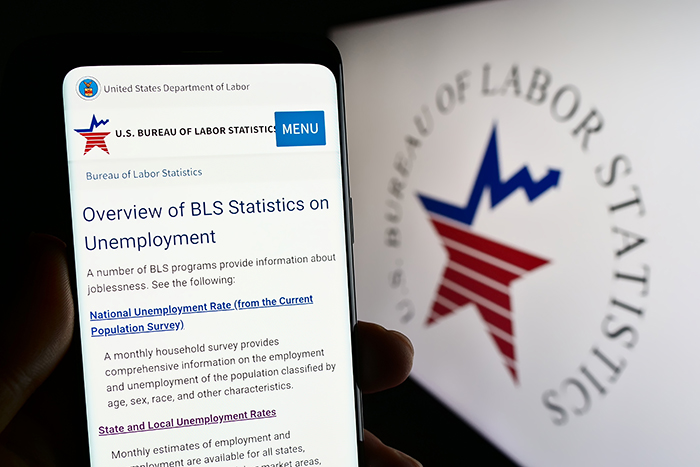As drought concerns continue to increase especially in the western U.S., smart irrigation system upgrades like controllers are becoming more necessary to make the best use of the available water supply. That was especially true for the L.A. Metro department, Los Angeles, as it considered its Orange Line, an 18-mile stretch of right-of-way land that encompassed more than 1,000 zones.
Water costs had gone from about $437,000 in 2014 up to $748,000 in 2018, according to a project summary. The department was looking to save money and incorporate newer, smarter technology and controllers into the system to keep track of leaks and wasted water. The existing system was at least 10 years old already.
The request for proposal involved Tetra Tech Inc., Pasadena, California, which was working with Geosyntec Engineering Inc., Los Angeles, and L.A. Metro on water conservation. Bill Kabaker, president of Precise Landscape Water Conservation, Los Angeles, worked with both companies on the upgrade plans.
Woods Landscape Maintenance, North Hollywood, California, has had contracts with Los Angeles Metro for about 20 years mostly for maintenance work.
The company does all its work with municipalities. Not only does it handle landscape and irrigation, it also does work with graffiti abatement and cleaning. The company, which has about 120 employees, is newer to irrigation services, having expanded into it about 10 years ago, but it has been in business for 45 years overall.
Jeff Woods, general manager, and Mario Accosta, supervisor, met with Kabaker and several vendors for suggestions and proposals and to discuss how best to do the project in a short timeframe “that would satisfy everyone, because they needed this done in that fiscal year,” says Woods. “They had the money to work with, and it was a ‘spend-it-or-lose-it’ type of situation.” Woods worked as the subcontractor on the installation while also retaining its maintenance contracts.
In looking at better water usage across the Metro’s lines, “one of the lowesthanging fruits was the Orange Line because it entailed 28 controllers,” Kabaker says. Of the right-of-way areas for the line, it was the most significant consumer of water. L.A. Metro’s department was also looking into conserving water in its bus and rail-washing, but the concept was the same throughout. “You’ve only got so much water. How do you reduce that and still get the results you want, whether you’re growing turf or washing a bus?”
Making a plan
As an irrigated space, this section of the L.A. Metro Orange Line isn’t a typical landscaped area. It’s miles of roadside property planted mostly with drought tolerant species such as rosemary and sage, says Accosta. Many trees are used alongside those, including sycamore and pine species. Since the plants were already fairly water efficient, additional water savings would most likely need to come from updating the irrigation system itself.
Kabaker worked on the analysis, assessing water consumption and singled out the Orange Line as ready for an update. The plans called for converting master valves with hydrometers to provide flow sensing capabilities and changing conventional controllers for smarter models that could make better use of the water provided.
“I wanted to make sure the controller was smartphone-accessible,” Kabaker says. “Consider that we’re dealing with a system that’s 18 miles long. If you had a leak, you might not see it for months. So flow sensing was an essential part of this.”
To make certain that the controllers’ expanded usefulness would continue past the installation, Kabaker made certain to include future communication fees in the ongoing maintenance plan budget. It was also important for him to start the work with Woods, who was the holder of the existing maintenance contract.
“He was involved every step of the way from reviewing the existing controllers and the main and master valves,” Kabaker says. “We had a significant amount of communication time before this went out to bid.”
“From my position, I would prefer to have the existing landscape maintenance company install the equipment for a number of reasons,” Kabaker says. First, this would ensure that the current company doesn’t feel threatened that someone else might complicate their processes. “And, they’ve got a vested interest in making sure this works, because they want to keep the contract.”
Working with Woods up front also meant that there weren’t surprises when it came to the updated system, Kabaker says.
When they first started on the update, they covered how the irrigation system currently worked, including the relays, timers and master valves, says Woods. But working with an older system meant infrastructure updates and creativity to update it effectively, especially for something that covered 18 miles with upwards of 1,000 stations.
Out of the list of controller locations, “some of them had one timer, some had two, some had three,” says Woods. “Some didn’t have the proper wiring.”
One of the major goals in updating the area with newer controllers for Accosta was to figure out how to get the master valve and flow sensor to work with multiple timers, he says. In some areas, the master valve wasn’t near the timer at all, up to a block away. He spent time on-site working with the product representatives trying to find a way to make the project work. He ended up using a decoder, which would allow the master valve and the flow sensor to run at the same time. For stations with multiple timers, he used relays so that when one timer was running, the sensor would only read the flow from that one and switch to the other timer on its turn.
“It was challenging,” Accosta says. “It took a lot of trial and error. About 90% of the stations were fine. But there were a few where we had to go from three controllers down to two controllers and double up on the amount of stations handled there and run extra wire.”
Updating the stations also meant sometimes updating the actual enclosures, says Kabaker. They needed to make sure the new enclosures were waterproof, to start. They also had to add insulation to keep interior temperatures inside a range that wouldn’t damage the effectiveness of the Wi-Fi communication. In some cases, they had to add new wiring and installed plugs for the updated controllers.
Getting along
On its own, working with municipalities takes a lot of effort to do well, says Woods. The bidding process can be cumbersome, especially when some bid documents can weigh in at more than 300 pages. It’s reasonable for some to look at that and decide that they’re better off working with residential and commercial customers.
But as a family-run business, Woods and his team break up the tasks of reviewing the project, determining available resources and developing a response, he says. That allows them to effectively calculate what the job’s requirements are and try to bid competitively while still making a profit.
It’s also important to have a clear idea not only of your own capabilities but of every piece of equipment that you’ll want to use or you risk being listed as an incomplete bid, says Kabaker.
“Make sure that you’ve defined all the components that you need in this bid,” he says.
All told, the project reduced water consumption for the Orange Line by 47 million gallons, says Kabaker. It was also revenue positive in six months. On top of those savings, the department was also able to take advantage of rebates for installing smart controllers, bringing in $23,000.
“I was able to facilitate that on Metro’s behalf,” says Kabaker. “It was the first time they’d ever received that rebate.”
Before updating with smart controllers that could connect via Wi-Fi to a phone or tablet, checking and programming all of the controllers took a huge amount of time, says Accosta. “If you have 48 stations (on that controller), you have to have somebody over at the valve. Then you have to run it from the irrigation timer, then they check it from there. Or you can run all of them and go down the line as it’s running.” But with smart controllers, Accosta is able to check and test the system from each station.
“It makes it much easier for one person to manage, as opposed to having one person at the controller and one at the valve,” checking each area individually, says Woods. “It’s so much more manageable.”
The smart controllers’ timers also automatically adjust to the weather, compared to previously being set manually. When the weather is cooler, it waters less than under hotter temperatures. In a drought impacted region, that can be a crucial tool in smart water use, says Accosta. The smart controller system also provides direct alerts if there are flow issues. That used to require lots of hands-on time and effort or the luck of a passing motorist noticing a leaking output. It allows them to be more proactive with maintenance, saving even more water by catching leaks sooner.
With a retrofit this complex, being geared toward nailing down specifications and knowing the plan before attack is key to making sure the job goes smoothly. “I’m a Type A personality and detail-oriented,” says Woods. “I like spreadsheets, and I would update them (during the work) just about every five minutes.” The L.A. Metro team was always eager to hear how things were moving along on a weekly basis, and with Woods’ notes they were able to lay the roadmap to job completion out. Since the more difficult controllers would take more of a focus, Accosta’s crew finished some of the easier controllers earlier to show that they were serious about keeping the project moving.
“Just as with most jobs, it was keeping the communication open across all the parties,” Woods says.
Working with the manufacturer representatives, who came out to the site regularly, also made a huge difference in solving smart controller installation obstacles, says Kabaker. Having multiple points of view and expertise available is a useful resource whenever it’s available.
“It’s really crucial to make sure that the manufacturers are engaged and receptive,” Kabaker says.
Without the representatives’ help on-site, “this project wouldn’t have happened.”





